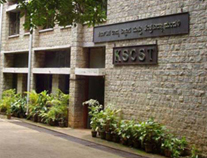|
In
1998, during the Annual General Body meeting of the Karnataka
State Council for Science and Technology (KSCST), it was
decided to decentralize KSCST's activities. This led to the
establishment of District Committees for Science and
Technology (DCST), which function as agencies for the
demonstration and diffusion of technologies developed by
various science and technology organizations.
District Committees Overview: There were
twelve District Committees for Science and Technology
established initially in the state, namely: Dakshina Kannada,
Kalaburagi, Mysore, Belagaavi, Vijayapura, Hassan, Bidar,
Uttara Kannada, Chitradurga, Dharwar, Bellary and Raichur.
Each committee was chaired by the
Deputy Commissioner, with the Chief Executive Officer of the
Zilla Panchayath serving as the Co-chairman. The committee
typically consists of around ten members from various fields,
including the Deputy Commissioner and the Chief Executive
Officer. The Hon. Secretary of the DCST is responsible for
initiating science and technology activities within the
district.
|
|
Objectives of the District Committees |
|
The primary objectives of the
DCSTs include:
|
|
|
Development of
Solutions: Focus
on creating solutions for local-specific problems with
support from educational and research institutions.
|
|
|
Adoption of
Technologies:
Implement relevant technologies tailored to local
conditions. |
|
|
Demonstration Centres:
Showcase adopted
technologies through dedicated demonstration centres. |
|
|
Technology Diffusion:
Facilitate the diffusion of technologies via joint
projects with technology users. |
|
|
Skill Development:
Provide training
programs to impart skills necessary for the installation,
commissioning, and maintenance of these technologies. |
|
|
Funding Support:
Offer funding on a grant-in-aid or project basis to
voluntary agencies for the popularization of science. |
|
|
Action Plans:
Prepare action plans aligned with the district's
development plans for effective utilization of science and
technology. |
|
|
Cooperation Promotion:
Encourage active collaboration among various government
and private agencies, as well as educational, research,
and training centers. |
|
|
Resource Survey:
Conduct surveys of district resources and develop plans
for their effective use. |
|
|
Current Status:
Of the twelve established DCSTs, several
have successfully completed specific science and technology
projects. There is a requirement to review the programs of
the DCSTs to implement further specific projects and
initiatives in the districts.
Currently, KSCST has established the
Natural Resources Data Management System (NRDMS) Centres in
all the districts of the state and presently are responsible
for overseeing science and technology activities. The district
NRDMS Centres are providing GIS based activities in each
district and are supporting district administration and line
departments in providing DSS based maps, spatial and
non-spatial information.
|





